banks create money
description: the concept that banks create money through lending beyond their deposits
52 results

Where Does Money Come From?: A Guide to the UK Monetary & Banking System
by
Josh Ryan-Collins
,
Tony Greenham
,
Richard Werner
and
Andrew Jackson
Published 14 Apr 2012
The way monetary economics and banking is taught in many — maybe most — universities is very misleading and what this book does is help people explain how the mechanics of the system work.” David Miles, Monetary Policy Committee, Bank of England “It is amazing that more than a century after Hartley Withers’s ‘The Meaning of Money’ and 80 years after Keynes’s ‘Treatise on Money’, the fundamentals of how banks create money still need to be explained. Yet there plainly is such a need, and this book meets that need, with clear exposition and expert marshalling of the relevant facts. Warmly recommended to the simply curious, the socially concerned, students and those who believe themselves experts, alike. Everyone can learn from it.”
…
WHAT DO BANKS DO? 2.1. The confusion around banking 2.2. Popular perceptions of banking 1: the safe-deposit box 2.2.1. We do not own the money we have put in the bank 2.3. Popular perceptions of banking 2: taking money from savers and lending it to borrowers 2.4. Three forms of money 2.5. How banks create money by extending credit 2.6. Textbook descriptions: the multiplier model 2.7. Problems with the textbook model 2.8. How money is actually created 3. THE NATURE AND HISTORY OF MONEY AND BANKING 3.1. The functions of money 3.2. Commodity theory of money: money as natural and neutral 3.2.1.
…
The term ‘money supply’, usually refers to cash and bank deposits taken together, with the latter being by far the most significant. On the Bank of England’s standard definition of the money supply, known as M4, this type of money now makes up 97.4 per cent of all the money used in the economy.‡ In this book we refer to the money created by banks as commercial bank money. 2.5. How banks create money by extending credit The vast majority of money in our economy was created by commercial banks. In effect what the UK and most other countries currently use as their primary form of money is not physical cash created by the state, but the liabilities of banks. These liabilities were created through the accounting process that banks use when they make loans (Section 2.8).
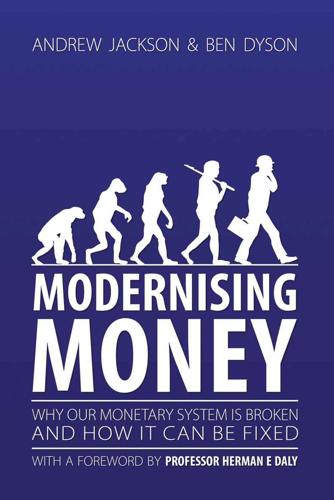
Modernising Money: Why Our Monetary System Is Broken and How It Can Be Fixed
by
Andrew Jackson (economist)
and
Ben Dyson (economist)
Published 15 Nov 2012
Banks had retained, albeit imperfectly, their ability to create substitutes that could function as money. In order to make the most of their money creation powers, banks were forced to innovate in order to find ways around the new legislation. The use of cheques became common as they made it easier for businesses and individuals to make payments to each other using bank-created money (bank liabilities, or ‘deposits’) in place of cash. At the same time, the development of wholesale money markets (where banks could borrow from each other) and the willingness of the Bank of England to provide funds on demand to banks in good health, further reduced the amount of Bank of England money that banks needed to hold, relative to their customer deposits: “[C]entral banks have facilitated settlement in central bank money by allowing low-cost transfers across their books, either of gross amounts (above all for wholesale payments, facilitating this by providing banks with cheap intraday liquidity) or of multilateral net amounts (more usually for retail payments, minimising the amount of liquidity that participating banks need to hold).”
…
In all the examples below, we ignore all balance sheet items apart from the ones in question. We also assume that balance sheet items are zero before the transaction in question takes place. This is purely to keep the examples simple and uncluttered. Creating money by making loans to customers How do banks create money by making loans? In this example, a self-employed builder, Jack, walks into MegaBank and asks to borrow £10,000 to buy a new van and some power tools. (Chapter 3 will show that loans to productive businesses like this make up just a small proportion of all bank lending.) Jack signs a contract with the back confirming that he will repay £10,000 over a period of five years, plus interest.
…
So if the numbers that banks add to your bank account are not money, but just credit, then there must be some credit risk attached to that money. In other words, there must be a risk that the bank won’t be able to repay you. The Bank of England makes this argument in a distinction between cash and bank-created money – the 2010 Q3 Quarterly Bulletin states: “Bank of England notes are a form of ‘central bank money’, which the public holds without incurring credit risk. This is because the central bank is backed by the government” (p.302). They imply that cash has no credit risk because it is backed by the central bank, which is in turn backed by the government.
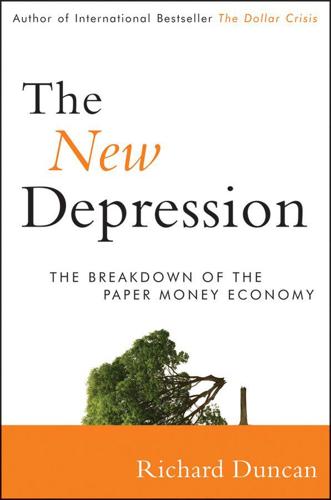
The New Depression: The Breakdown of the Paper Money Economy
by
Richard Duncan
Published 2 Apr 2012
The true explanation is that a dozen or so central banks have printed nearly $7 trillion worth of fiat money between 1971 and 2007 (and $3 trillion more subsequently) in order to manipulate the value of their currencies so as to achieve strong export-led growth. Exhibit 2.4 lists the countries responsible. EXHIBIT 2.4 Foreign Exchange Reserves Source: IMF How It Works Exactly how do central banks create money and accumulate foreign exchange reserves? China has the largest amount of foreign exchange reserves. Therefore, it will be used as the case study to illustrate how central banks accumulate reserves. In 2007, China’s trade surplus with the United States was $259 billion. In other words, China sold the United States $259 billion more in goods and services than the United States sold to China that year.
…
Despite the massive government borrowing that was required to fund that deficit, the interest rate the government pays on its benchmark bond is 2 percent, which is extraordinarily low. The government demand to borrow money is very high, but the government supply of new fiat money (i.e., the money created by the Fed) is also extraordinarily high. Fiat money creation is financing the government’s budget deficit. When a central bank creates money and uses it to finance the government’s budget deficit, it is said that the central bank is monetizing the debt. With QE1 and QE2, the Fed monetized part the U.S. government debt. That is the main reason U.S. government bond yields—and all other interest rates in the country which are benchmarked off the government bond yield—are so low.
…
Commodities generally perform well in an inflationary environment and suffer in times of disinflation or deflation. Gold and silver benefit most from quantitative easing, which undermines public confidence in the national currency. 2. Stocks tend to rise (1) in a healthy economic environment, (2) when central banks create money and pump it into the financial markets (so long as they don’t cause too much inflation), (3) when the government runs a budget surplus and crowds in the private sector, and (4) when the trade deficit is larger than the budget deficit. The last two will be explained below. Stocks tend to perform badly when inflation at the CPI level exceeds 4 percent, in a weak economic environment, and, particularly, during a severe period of debt deflation. 3.
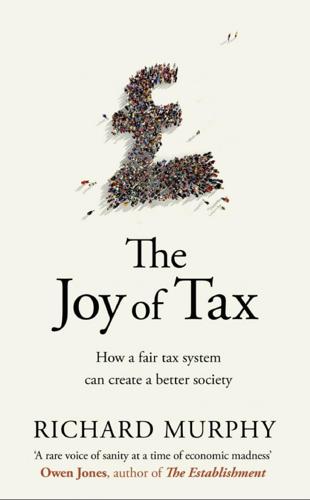
The Joy of Tax
by
Richard Murphy
Published 30 Sep 2015
And the deficit that gave rise to the Treasury bond or gilt has now been replaced by newly created money, which just goes to prove that this is exactly what a government does when it runs a deficit – it creates government-made money. If you don’t believe this you wouldn’t be alone. Indeed, the person who in my opinion was the second greatest economist of the last century, J. K. Galbraith, said: The process by which banks create money is so simple that the mind is repelled.8 He was right: the process is so simple that we’re repelled by it. But now you know it’s true, and the Bank of England said so in 2014. It’s also true that the UK’s quantitative easing funding has effectively cancelled government debt, as evidenced by the fact that the Bank of England now hands the interest paid to it by the Treasury as a result of it owning government debt straight back to the Treasury from whence it came.
…
First of all, the best, and in reality the main reason to use taxation is that tax lets a government reclaim the money it has spent into the economy, in order to stop the money supply over-expanding. I have shown that both the government and the banks can create money out of thin air, and do so. In the case of commercial banks control is maintained by requiring that loans are repaid. That process of loan repayment, as noted above, quite literally destroys bank-created money. That’s important: loan repayment stops the amount of money in the economy increasing without check, which would result in inflation. It is just as necessary that the government has available to it a means of destroying the money it can create and spend at will into the economy, and that mechanism is taxation.
…
The reality of how money is created today differs from the description found in some economics textbooks: Rather than banks receiving deposits when households save and then lending them out, bank lending creates deposits. In normal times, the central bank does not fix the amount of money in circulation, nor is central bank money ‘multiplied up’ into more loans and deposits. Although commercial banks create money through lending, they cannot do so freely without limit. Banks are limited in how much they can lend if they are to remain profitable in a competitive banking system. Prudential regulation also acts as a constraint on banks’ activities in order to maintain the resilience of the financial system.

The Blockchain Alternative: Rethinking Macroeconomic Policy and Economic Theory
by
Kariappa Bheemaiah
Published 26 Feb 2017
Hence, via the issuance of debt, commercial banks create money, credit, and purchasing power. The vast majority of what we consider money is created in this manner. Of the two types of broad money, bank deposits make up between 97%–98% of the amount currently in circulation. Only 2%–3% is in the form of notes and liabilities of the government (McLeay et al., 2014). How much debt commercial banks issue and how that debt is utilized are therefore topics of great importance. Rather than exchanging currency , most consumers use their bank deposits as a store of value and as the medium of exchange. Once a bank creates money by issuing debt, most people use that money to make and receive payments via their deposits rather than currency, especially as transactions today are mostly digital.
…
Although this liability previously did not exist, and hence does not have any physical representation in the form of currency, it is in effect an entry in the bank’s account. But as all these entries can be converted into currency, the instant it issues debt the commercial bank is creating new money. Hence, loans create deposits and not the other way around. Th manner in which commercial banks create money by making loans or issuinig credit may be hard to digest if this is the first time you are reading about it, but it is how money is created today. When a commercial bank issues a loan to a client, for example to buy a house, it does not give this loan in cash. Instead, it credits their account with a deposit that amounts to the mortgage.
…
As such, they are responsible for ensuring how much debt is issued by commercial banks, without which they would not be able to control the supply of money. This lever of control exists in the form of capital requirements . Capital requirements play an important role in the production of debt-based money as they offer, among other things, a safeguard to a bank run. Since a bank creates money as it makes out loans, they are at risk of running out of physical currency in the case that a large number of the depositors decide to withdraw their deposits. To address this risk, commercial banks are obliged to hold some amount of currency to meet deposit withdrawals and other outflows, but using physical banknotes to carry out these large volume transactions would be extremely cumbersome.
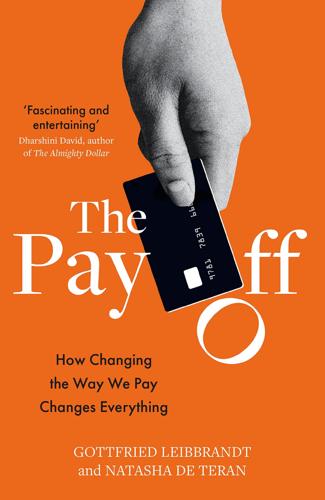
The Pay Off: How Changing the Way We Pay Changes Everything
by
Gottfried Leibbrandt
and
Natasha de Teran
Published 14 Jul 2021
Many of the headlines used to describe the Covid-19 economic aid programme involved the printing of banknotes: the Fed was ‘firing up the printing press’, the European Central Bank (ECB) was ‘priming the money-printing gun’ or, for those of a more digital bent, the ‘Money Printer Go Brrr’ meme. Evocative, but misleading; just as ‘sending’ money isn’t what banks do to make payments, ‘printing’ isn’t the way that central banks create money. Paradoxically, printing banknotes and putting them into circulation through the banking system does not typically increase the money supply. Central banks create money by increasing reserves, the deposits that commercial banks hold at central banks, and reserves could exist quite happily in a world without cash. While the private sector has ample motive to promote a move away from cash – the banks to lower their costs, the merchants to reduce commercial friction and overheads, and the card industry, wallet and e-payment providers to increase their revenue – the public sector is also keen.
…
For them, this is real money that they can use whenever they need to make a payment. It is the same as having the coins in their purses, but without the bother. Meanwhile, the borrowers also have their 75 coins to spend as they need. So by taking the deposited coins and making the loan, the bank has just created 75 gold coins. Abracadabra! Modern banks ‘create’ money in much the same way. Customers deposit their money at banks which in turn use much of it to make loans. The banks deposit the rest of the money at central banks to ensure there’s sufficient liquidity to meet the demands of customers who want to withdraw their money. Banks can pay out the proceeds of loans in cash or deposit the proceeds in borrowers’ accounts.

Why We Can't Afford the Rich
by
Andrew Sayer
Published 6 Nov 2014
And the loan is not created out of deposits: Loans create deposits, not the other way around’ (Pettifor, 2014, p 25). 67 This means that they don’t necessarily wait until they (the bank) first has a certain level of reserves. ‘In the real world, banks extend credit, creating deposits in the process, and look for the reserves later’ (Alan Holmes Senior Vice President, Federal Reserve Bank of New York (1969), cited by Positive Money at http://www.positivemoney.org.uk/how-banks-create-money/proof-that-banks-create-money/). 68 Pettifor (2006), p 56. Geoff Mulgan uses the metaphor of ‘predation’, but in most cases this is too strong: predators kill their victims rather than just free-ride on them: Mulgan, G. (2013) The locust and the bee: Predators and creators in capitalism’s future, Princeton, NJ: Princeton University Press. 69 Ryan-Collins et al (2011). 70 Pettifor (2006), p 62. 71 See David Harvey’s Limits to capital for an analysis of fictitious capital ((1982), London: Verso). 72 As Hudson comments, ‘Finance and banking courses are taught from the perspective of how to obtain interest and asset-price gains through credit creation or by using other peoples’ money, not how an economy may best steer savings and credit to achieve the best long-term development.’
…
Of course, there are defences of interest on credit, but before we consider them, there’s a common misunderstanding of bank lending and where credit comes from that we need to rectify. It’s a misunderstanding that has long allowed the financial sector to escape serious scrutiny, and there’s a risk the delusion may persist. How banks create money for nothing and charge us interest for it The essence of the contemporary monetary system is creation of money, out of nothing, by private banks’ often foolish lending. (Martin Wolf)61 I believe it is absolutely fundamental to understand that banks do not intermediate already existing money.
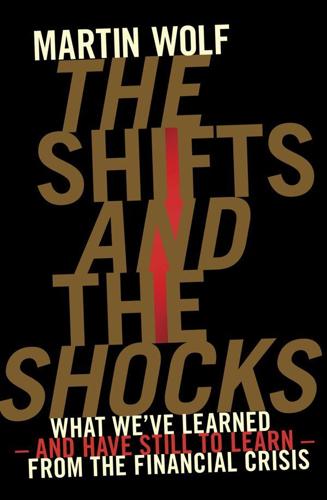
The Shifts and the Shocks: What We've Learned--And Have Still to Learn--From the Financial Crisis
by
Martin Wolf
Published 24 Nov 2015
That is why people hold money, despite the costs of doing so, relative to high-yielding assets or desirable goods and services. Money needs to be safe. Indeed, people keep their money in banks because this is normally safer and more convenient than if it is under a mattress. Moreover, people do not just deposit the money they have in banks. As Mr Milne also reminds us, ‘banks create money by lending’.12 Indeed, nearly all the money in a moderately sophisticated modern economy is a by-product of bank lending – the creation of credit – by these private businesses. Banks, in turn, are profit-seeking, risk-taking financial intermediaries. Inevitably, these institutions are least safe during a crisis, which is precisely when everybody is most concerned about their safety.
…
Finally, since money creation would no longer need private debt, the level of such debt could fall dramatically. Indeed, in the transition, the government could use the excess of the total supply of money over its own debts to fund a dramatic decline in private debt, through buy-backs. I would add to these benefits that the extinction of conventional bank-created money would almost certainly shrink the financial sector, reduce the aggregate incomes earned by bankers and so improve the distribution of income. The fiscal implications alone would be dramatic. According to an important International Monetary Fund working paper on the Chicago Plan by Jaromir Benes and Michael Kumhof, total bank deposits in the US are around 180 per cent of GDP.41 Assume the demand for money merely grows in line with nominal gross domestic product, at about 5 per cent a year.
…
This consists of currency, again, and the deposits of banks at Federal Reserve banks (that is, the central bank). The monetary base is the government-created money in the system: it is a liability of government. The rest of the money supply is the liability of banks. The monetary base is sometimes called ‘outside money’ and the bank-created money supply ‘inside money’. Until the recent crisis, virtually all M2 was inside money – a by-product of the rapidly expanding lending activities of private financial intermediaries. The monetary base barely grew. In the early years of the crisis, however, lending to the private sector by financial intermediaries shrank.
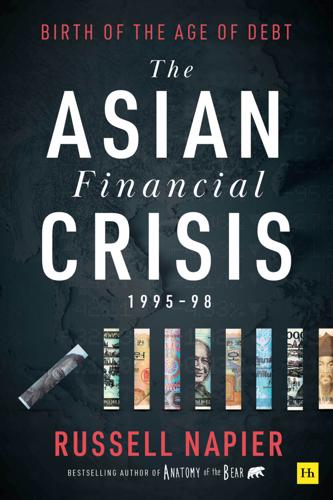
The Asian Financial Crisis 1995–98: Birth of the Age of Debt
by
Russell Napier
Published 19 Jul 2021
In Asia, the local commercial banking systems responded to this increase in their available reserves in the way that one would expect, and they accelerated their loan growth and their money creation. That commercial banks, and not central banks, create most of the money we spend every day is a fact that is still not fully understood properly by all investors. The most eloquent description of how they do so still comes from the pen of John Kenneth Galbraith: The process by which banks create money is so simple that the mind is repelled. Where something so important is involved, a deeper mystery seems only decent. The deposits of the Bank of Amsterdam (1609–1791) were, according to the instruction of the owner, subject to transfer to others in settlement of accounts. The coin on deposit served no less as money by being in a bank and being subject to transfer by the stroke of a primitive pen.
…
John Kenneth Galbraith, Money Whence it Came, Where it Went, 1975 The reserves commercial banks hold today with the central bank fulfil the role that gold once did. As long as they hold sufficient reserves with the central bank and meet other regulatory requirements, they are free to create money just as Galbraith describes. This commercial bank-created money does not usually circulate as bank notes, a privilege still retained by governments in most if not all jurisdictions, but it is created in the form of a transfer to the borrower that becomes their deposit. The borrower spends those new deposits on, say, their house purchase and the house seller then spends the deposits and thus new money has been created and circulates in the economy.
…
Indeed, just as I wrote a recommendation that the company should buy shares of Citibank, the company was removing clients’ deposits from the same bank just in case the bank collapsed! However, my time was not wasted. Learning about how commercial banks work was the most valuable thing I have ever done in my career. There are many mysteries to commercial banking and many of them remain mysteries even to investors with decades of experience. How banks create money and how their balance sheets impact their earnings are crucial mechanisms that anyone investing in any stock market needs to understand. It may be that that understanding is rarely useful; but when it is useful, it is incredibly useful. That there were skunks among the Asian banking system was not hard to determine if you had already lived through a credit boom and bust.
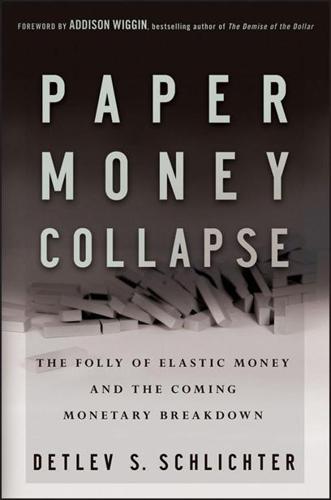
Paper Money Collapse: The Folly of Elastic Money and the Coming Monetary Breakdown
by
Detlev S. Schlichter
Published 21 Sep 2011
Money that has an essentially stable or on trend appreciating purchasing power would be powerful competition to fractional-reserve deposits and government debt. Other components of the paper money infrastructure further enhance the state’s control over economic resources. There is the state-owned central bank. Central banking is usually profitable. The central bank creates money at almost zero cost and lends it to the banking sector at interest or it buys interest-bearing securities with the newly created money. This gain usually goes to the state. Obviously, to the extent that the central bank buys government bonds, the government pays interest to the central bank first and then collects the central bank’s profits later.
…
Furthermore, the direct monetization of government debt has been a constituting feature of central banks from the beginning. We have seen that it was one of the key objectives behind the founding of the Bank of England. From the start, the Bank of England was allowed to issue notes against obligations of the Crown. Central banks create money by buying things and paying for them by crediting the account of the seller with newly created money, thus monetizing whatever the central bank buys. Although this could, in theory, be practically anything, the state usually encourages the central bank to buy state debt. The official reason is that the central bank should not risk incurring losses by buying risky assets, and that it should thus mainly monetize safe government bonds.

The City
by
Tony Norfield
Many apparently ‘non-financial’ companies do these things too, but there are some specific functions that only financial companies can perform. Bank credit creation Most people know that banks ‘make money’, but this is usually understood to mean that they register big profits. Few realise that the phrase is literally true: banks create money in their credit operations. This topic is often poorly covered by Marxist writers, who can give the impression that banks merely take in deposits from a myriad of people and companies and then lend this money out to others. In other words, they see banks acting only as middlemen with existing sums of money.7 Banks do take in deposits, but the credit creation process is even more important and highlights one way in which command over society’s resources does not have to depend directly upon value production.
…
For example, the US Federal Reserve is the monopoly issuer of US dollar currency, as are other central banks with their own currencies, and a $20 bill costs only 10 cents to produce. Yet, the vast bulk of what we call money is created in quite a different way via the banking system. This happens through banks making loans. For example, a bank creates money by making a $200,000 mortgage loan to a property buyer, or a $50 million investment loan to a company, and credits their bank accounts with the funds. These funds in the borrower’s account should be seen as fictitious deposits, since they are created out of thin air by the bank and do not depend upon how much actual cash the bank has at its disposal at the time.
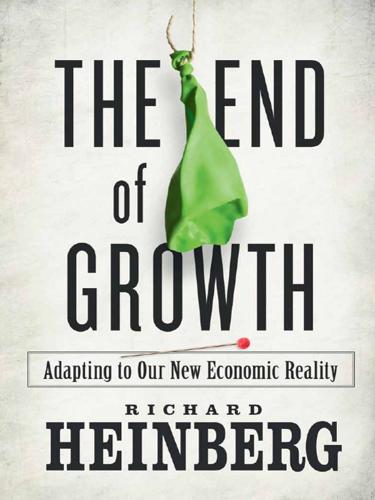
The End of Growth: Adapting to Our New Economic Reality
by
Richard Heinberg
Published 1 Jun 2011
How does a nation inflate its currency? There are two primary routes: maintaining very low interest rates encourages borrowing (which, with fractional reserve banking, results in the creation of more money); or direct injection by government or central banks of new money into the economy. This in turn can happen via the central bank creating money with which to buy government debt, or by government creating money and distributing it either to financial institutions (so they can make more loans) or directly to businesses and citizens. Those who say we are heading toward hyperinflation argue either that existing bailouts and stimulus actions by governments and central banks are inherently inflationary; or that, if the economy relapses, the Federal Reserve will create fresh money not only to buy government debt, but to bail out financial institutions once again.
…
But, this “re-set” would give us the opportunity — if we took advantage of it — to restructure our economic and financial systems to be more sustainable and resilient. The second strategy would consist of governments or central banks creating debt-free money. This is how economist Richard Douthwaite, founder of the organization FEASTA and editor of the book Fleeing Vesuvius, describes it: The solution is to have central banks create money out of nothing and to give it to their governments either to spend into use, or to pay off their debts, or give to their people to spend. In the eurozone, this would mean that the European Central Bank would give governments debt-free euros according to the size of their populations. The governments would decide what to do with these funds.
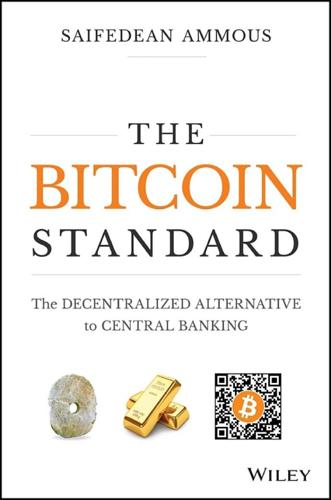
The Bitcoin Standard: The Decentralized Alternative to Central Banking
by
Saifedean Ammous
Published 23 Mar 2018
Department of State, “Volume I” in Proceedings and Documents of the United Nations Monetary and Financial Conference, Bretton Woods, New Hampshire, July 1–22, 1944. 13 Hans‐Hermann Hoppe, “How Is Fiat Money Possible?” Review of Austrian Economics, vol. 7, no. 2 (1994). 14 This is an important but often underappreciated feature of government money. Because banks create money when they issue loans, the repayment of loans or the bankruptcy of the borrower leads to a reduction in the money supply. Money can have its supply increase or decrease depending on a variety of government and central bank decisions. 15 Source: World Bank. 16 Source: World Bank for all countries, and OECD.Stat for Euro area. 17 Source: OECD.Stat. 18 Steve Hanke and Charles Bushnell, “Venezuela Enters the Record Book: The 57th Entry in the Hanke‐Krus World Hyperinflation Table,” Studies in Applied Economics, no. 69 (December 2016). 19 This is termed the Cantillon Effect, after the Irish‐French economist Richard Cantillon, who explained it in the eighteenth century.
…
But this is not how a capital market functions in any modern economy today, thanks to the invention of the modern central bank and its incessant interventionist meddling in the most critical of markets. Central banks determine the interest rate and the supply of loanable funds through a variety of monetary tools, operating through their control of the banking system.6 A fundamental fact to understand about the modern financial system is that banks create money whenever they engage in lending. In a fractional reserve banking system similar to the one present all over the world today, banks not only lend the savings of their customers, but also their demand deposits. In other words, the depositor can call on the money at any time while a large percentage of that money has been issued as a loan to a borrower.
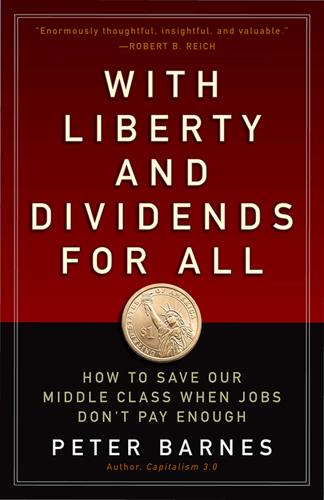
With Liberty and Dividends for All: How to Save Our Middle Class When Jobs Don't Pay Enough
by
Peter Barnes
Published 31 Jul 2014
What’s the problem with this? One is that almost all the money in our economy is owed back to banks with interest. This means our overall debt burden is considerably higher than it needs to be. Another is that private banks are walking off with a lot of money that could otherwise flow to us. Instead of letting banks create money by lending it to us, the Treasury or Fed could wire equal dividends to us directly, without interest or principal repayment required. This wouldn’t create any more money than banks now do; it would just create it in a different way.11 Think about the board game Monopoly. Cash is added to the game every time a player passes Go.
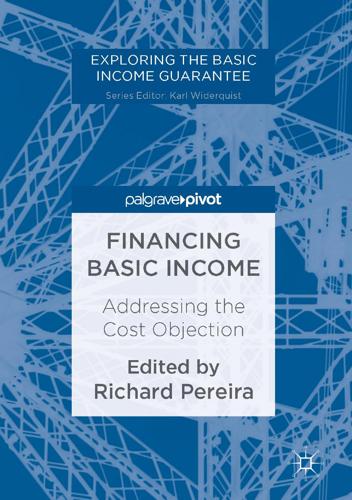
Financing Basic Income: Addressing the Cost Objection
by
Richard Pereira
Published 5 Jul 2017
Since property makes up a major proportion of their balance sheets, a reduction in property prices will affect their capital base. Another approach is to enforce 100% reserve requirements on banks, which would prevent them from creating credit and would restrict them to only loaning out deposits on hand, serving as intermediaries between depositors (savers) and borrowers. If there is any doubt that banks create money, consider that private central banks in the US, EU and Japan have created trillions of dollars in “quantitative easing” a euphemism for (electronic) money printing. This money was then given to banks in exchange for their non-performing assets. Profits for the big four Australian banks (National Australia Bank [NAB], Commonwealth Bank [CBA], Australia and New Zealand Banking Group [ANZ] and Westpac [WBC]) totalled $27 billion (cash basis, 2011–2012), with dividends of $16 billion.

This Is Not a Drill: An Extinction Rebellion Handbook
by
Extinction Rebellion
Published 12 Jun 2019
Today’s economies are financially addicted to growth because at the heart of the current financial system lies the pursuit of the highest rate of financial return. That in turn puts publicly traded companies under pressure every quarter to show that they have growing sales, growing profits and growing market share. And, since banks create money as debt which bears interest (every time they make a mortgage or a loan), repaying those debts likewise adds to the financial pressure for continual growth. The Economist’s Growth Curve Our economies are politically addicted to growth because pension funds and the job market have become structurally dependent upon it.

Cryptoeconomics: Fundamental Principles of Bitcoin
by
Eric Voskuil
,
James Chiang
and
Amir Taaki
Published 28 Feb 2020
Credit expansion is necessarily finite. So let us revisit the scenario where Bank creates credit at negative reserve (i.e. out of thin air), this time considering spending. For example, on deposits of 0oz Bank intends to issue a loan of 1000oz. Instead of relying on reserved money to eventually settle the loan, Bank “creates money” on its balance sheet. Bank then increases Borrower’s credit and debt accounts, representing the borrowed money and the obligation to repay respectively: Savings Money Credit Debt Asset Liability Bank 1000oz 1000oz 1000oz 1000oz Borrower 1000oz 1000oz 1000oz 1000oz When Borrower trades 1oz (from his credit account) for a car, his credit account is decreased by 1oz and Merchant’s is increased by 1oz.

The Color of Money: Black Banks and the Racial Wealth Gap
by
Mehrsa Baradaran
Published 14 Sep 2017
Yet to realistically confront and prepare for the obstacles these bankers were facing would have required too bleak a vision—that the U.S. economy would sink into a dramatic decline, that segregation would increase in resiliency, and that racism would continue unabated. The most crucial structural problem black banks faced was their inability to multiply money due to segregation. Banks create money and wealth through fractional reserve lending. By lending customer deposits, banks create new money; they “multiply" existing money in a process called “the money multiplier effect." A bank customer, Alice, deposits her money in Bank A. Her bank holds a fraction of that money as “reserves" at the bank and lends out the majority of it to another customer, Betty.
…
In this process, if Alice’s initial deposit was $100 and it was lent out ten times, with each bank holding 10 percent for reserves, it would have created $900 of new money.137 The money supply increases from $100 to $1,000. This is the “magic” of fractional reserve lending. Every time a loan is made, a deposit is created. To repeat, banks create money, or bank deposits, by making new loans. This money multiplier effect is what makes banks the engines at the center of the economy— the new money is “created literally out of thin air.”138 This is what Alexander Hamilton meant when he said that banks allow capital to “acquire life” and become productive—banks increase the overall wealth of a community by simply taking deposits and lending them out.
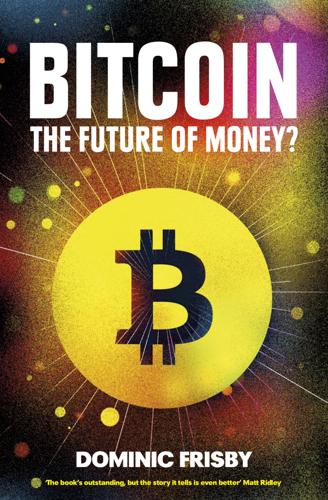
Bitcoin: The Future of Money?
by
Dominic Frisby
Published 1 Nov 2014
Well, banks (not central banks, but so-called ‘private banks’; the likes of HSBC or Wells Fargo) create money when they make loans. Consider the sale of my house. The purchasers took on a mortgage to buy it, as is normal. In issuing the mortgage (for which they took the deeds of the house as collateral), the lending bank created money, which was then paid to me. The funds didn’t come from investors or from the deposits of others. The money did not previously exist. Thus modern electronic money – dollars, pounds and euros – is created through lending. Of course, governments create money through such processes as quantitative easing, but, even so, most money is lent into existence.
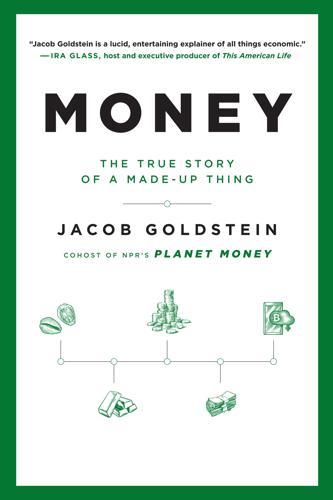
Money: The True Story of a Made-Up Thing
by
Jacob Goldstein
Published 14 Aug 2020
In order to meet the higher interest payments, countries had to raise taxes or cut spending. This would make unemployment, which was already high, go even higher. This, in turn, would mean lower tax revenues, which would make it harder to pay off the debt. There was a traditional way out of this trap: the central bank created money and bought government bonds on the open market. This lowered interest rates, which encouraged businesses to borrow, invest, and hire more workers, which in turn led to more tax revenues, which made it easier for the government to pay its debt. There was another benefit, as well: the lower interest rates tended to drive down the value of the currency, which made the country’s exports cheaper for foreign buyers.
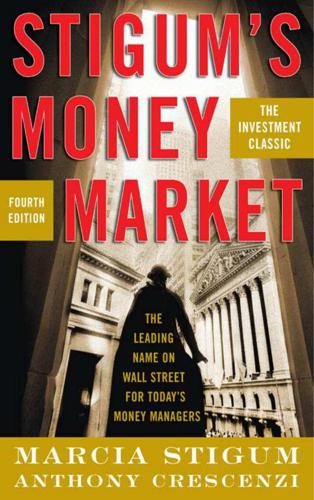
Stigum's Money Market, 4E
by
Marcia Stigum
and
Anthony Crescenzi
Published 9 Feb 2007
Banks and thrifts are in fact the only entities allowed to offer checking accounts, as state and federal laws require that an entity hold a bank charter in order to offer checking accounts. Second, in the course of their lending activity, banks create money. The reason is that demand deposits, which are a bank liability, count as part of the money supply—no matter how one defines that supply, and although the focus on the aggregate growth in the money supply does not grab as much attention as it once did, the supply of money is immensely important in determining economic activity. Just how banks create money takes a little explaining. We have to introduce a simple device known as a T-account, which shows, as the account below illustrates, the changes that occur in the assets and liabilities of a spending unit—consumer, firm, or financial institution—as the result of a specific economic transaction.
…
PART ONE Some Fundamentals Copyright © 2007, 1990, 1983, 1978 by The McGraw-Hill Companies, Inc. Click here for terms of use. CHAPTER 2 Funds Flows, Banks, and Money Creation Copyright © 2007, 1990, 1983, 1978 by The McGraw-Hill Companies, Inc. Click here for terms of use. As preface to a discussion of banking, a few words should be said about the U.S. capital market, how banks create money, and the Fed’s role in controlling money creation. This will provide background for Chapters 6 and 7, which cover domestic and Eurobanking, and Chapter 9, where we examine in greater detail the Fed’s role. Roughly defined, the U.S. capital market is composed of three major parts: the stock market, the bond market, and the money market.
…
goals is now defunct, having expired in May 2000. In its place, the Fed has gone back to pegging the funds rate and nudging it up or down when it wants to adjust its monetary policy. REVIEW IN BRIEF • In order to understand banking, it is important to have a grasp of funds flows in the capital markets, how banks create money, and the Fed’s role in controlling money creation. • Every spending unit in the economy is constantly receiving and using funds, with some entities running funds surpluses, which finance the funds deficits of other entities. • Historically, households have been the major supplier of funds, channeling their funds to the business sector.
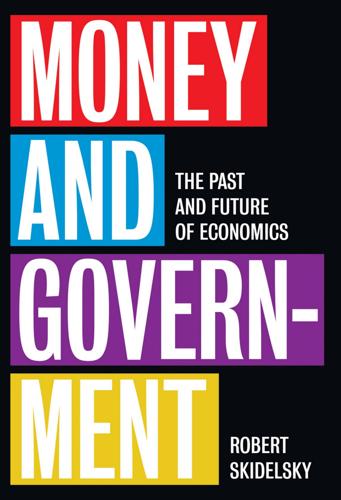
Money and Government: The Past and Future of Economics
by
Robert Skidelsky
Published 13 Nov 2018
By lending more to the business sector than flows in as savings from the household sector, the banking system will cause the circular flow to expand, and the price level to rise. When banks are lending more than the public wishes to save, there is no check to the expansion of money and rise in prices. Wicksell asks us to imagine a giant bank that is the source of all loans and in which all the community’s money is deposited. In giving customer A a loan, the bank creates money out of nothing. When A spends the loan, he increases customer B’s deposits in the same bank, the spending of which increases customer C’s deposits, and so on. In other words, the first loan enables prices to rise without limit. As Wicksell said, the upward movement of money ‘creates its own draught’.18 The conclusion suggested by this thought experiment is that governments do not have direct control of the money supply; money in modern economies is created by commercial banks when they make loans.
…
The context of these discussions was the radical volatility of prices, very different from the muted modulations of the previous century: post-war hyperinflation in some countries being followed by price collapses. John Maynard Keynes and Edwin Cannan debated the causes of the wartime and post-war inflations in a re-run of the Currency versus Banking School debates of the early nineteenth century. Cannan, a professor of economics at the LSE , denied that banks create money. To him they were simply cloakroom attendants, who issued tickets for money deposited with them. It was the central bank that produced the ‘extra’ money. Thus the problem of stopping inflation boiled down to limiting the issue of central bank notes. Cannan wrote as much in his book The Paper Pound, first published in 1919: ‘Burn your paper money, and go on burning it till it will buy as much gold as it used to do!’
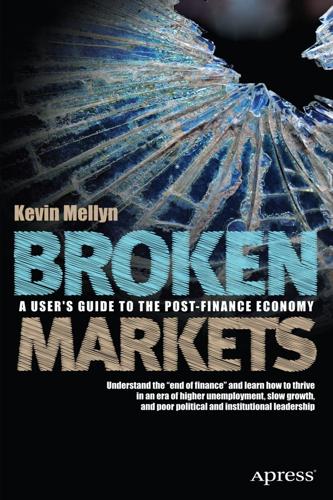
Broken Markets: A User's Guide to the Post-Finance Economy
by
Kevin Mellyn
Published 18 Jun 2012
Meanwhile, regulatory capital rules—as well as risk aversion to the real economy and lack of loan demand by shell-shocked enterprises and households—have stuffed bank balance sheets with sovereign bonds. Central bank balance sheets are whole multiples of pre-crisis levels due to bad asset purchases and “quantitative easing”—central banks creating money to buy debt securities. Scene Ten The finance crisis seems contained, and states and banks hope for a return to something resembling pre-crisis conditions or recovery while they continue to patch over difficulties ad hoc (e.g., Greece, Ireland, US house prices). Recovery in the real economy and meaningful reductions in unemployment remain elusive.
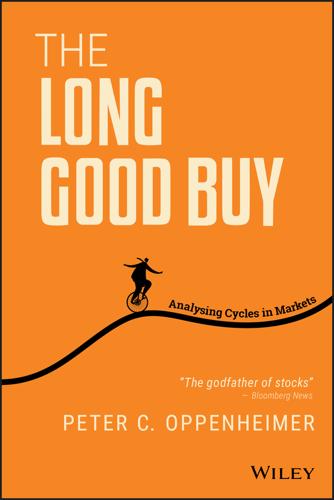
The Long Good Buy: Analysing Cycles in Markets
by
Peter Oppenheimer
Published 3 May 2020
Available at https://www.bbc.co.uk/news/business-15217615 4 TARP was a programme of the US government that helped to stabilise the financial system through a series of measures that included the TARP bailout programme, authorising $700 billion to bail out banks, AIG, and auto companies. It also helped credit markets and homeowners. Quantitative easing (QE) – or large-scale asset purchases – refers to monetary policy that entails a central bank creating money that is used to buy predetermined amounts of government bonds or other financial assets in order to inject liquidity into the economy. 5 Outright Monetary Transactions (OMT) is a programme of the European Central Bank under which the Bank makes purchases (outright transactions) in secondary, sovereign bond markets, under certain conditions, of bonds issued by euro area member states. 6 Balatti, M., Brooks, C., Clements, M.
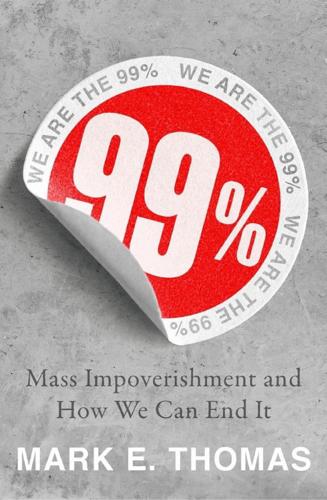
99%: Mass Impoverishment and How We Can End It
by
Mark Thomas
Published 7 Aug 2019
However, politicians of all parties continue to assure us that there is no money available for hospitals and flood defences. But government and Central Bank money-creation is only the first and most obvious way that money can be created out of nothing. There is also a less obvious, but far more important, way: private sector banks create money. As Michael McLeay, Amar Radia and Ryland Thomas of the Bank of England’s Monetary Analysis Directorate explained, in a society like the UK that operates a fiat currency: In the modern economy, most money takes the form of bank deposits. But how those bank deposits are created is often misunderstood: the principal way is through commercial banks making loans.
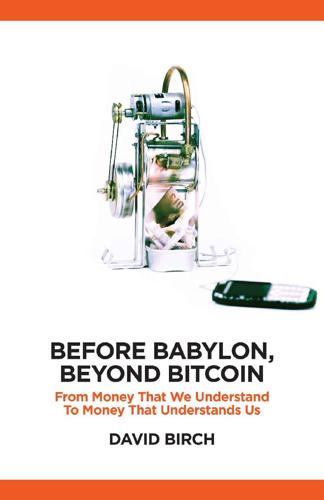
Before Babylon, Beyond Bitcoin: From Money That We Understand to Money That Understands Us (Perspectives)
by
David Birch
Published 14 Jun 2017
There’s no need to go deeper into this mechanism at this juncture, but it is useful to note the following three key points in the Bank of England’s high-level description of the current money-creation regime. Rather than banks receiving deposits when households save and then lending them out, it is bank lending that creates deposits. Although commercial banks create money through lending, they cannot do so freely without limit. Banks are limited in how much they can lend if they are to remain profitable in a competitive banking system. Prudential regulation also acts as a constraint on banks’ activities to maintain the resilience of the financial system.
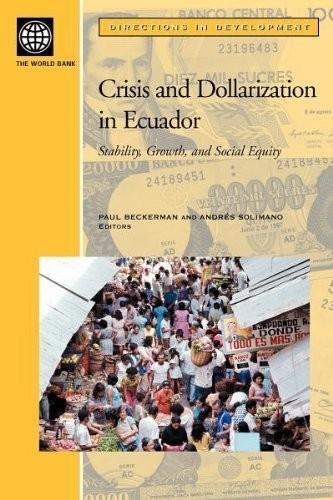
Crisis and Dollarization in Ecuador: Stability, Growth, and Social Equity
by
Paul Ely Beckerman
and
Andrés Solimano
Published 30 Apr 2002
During the first two decades of the 20th century, the Liberal Party fell under the sway of a group of Guayaquil cacao producers and the trading firms and banks associated with them.7 The party’s control of the government enabled some business figures to divert revenue flows to LONGER-TERM ORIGINS OF ECUADOR’S “PREDOLLARIZATION” CRISIS 23 themselves or their supporters, while the banks extended profitable loans to cover a growing public deficit. The banks created money (there was neither a central bank nor a banking supervisor), causing an inflation problem. This “system” collapsed in the 1920s when a series of external shocks struck the cacao economy. Fungal disease sharply reduced output, while growing cacao exports by British colonies (and later, the onset of the world Depression) drove down world prices.
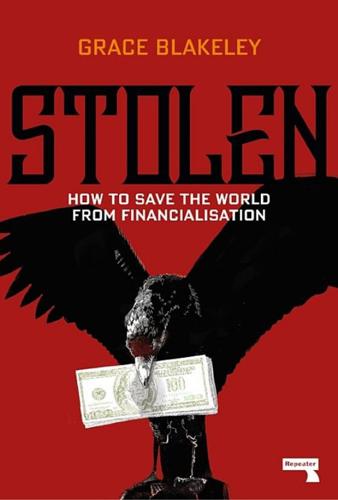
Stolen: How to Save the World From Financialisation
by
Grace Blakeley
Published 9 Sep 2019
The Oxford Handbook of the Sociology of Finance, Oxford: Oxford University Press; Thompson, H. (2009), “The Political Origins of the Financial Crisis: The Domestic and International Politics of Fannie Mae and Freddie Mac”, Political Quarterly, vol. 80 10 This account draws on: Keynes (1936); Minsky (1986); Shiller (2000); Knight (1921); Haldane, A. and May, R.M. (2011) “Systemic Risk in Banking Ecosystems”, Nature, vol. 469. 11 This account draws on: Jablecki, J. and Machaj, M. (2009) “The Regulated Meltdown Of 2008”, Critical Review, vol. 21; Lockwood, E. (2014) “Predicting the Unpredictable: Value-At-Risk, Performativity, and the Politics of Financial Uncertainty”, Review of International Political Economy, vol. 22; Colander, D. and Haas, A. (2009) “The Financial Crisis and the Systemic Failure of the Economics Profession”, Critical Review, vol. 21; Haldane and May (2011); Lysandrou, P. and Nesvetailova, A. (2015) “The Role Of Shadow Banking Entities in the Financial Crisis: A Disaggregated View”, Review of International Political Economy, vol. 22; Michell, J. (2016) “Do Shadow Banks Create Money? ‘Financialisation’ and the Monetary Circuit”, University of the West of England Economics Working Paper 1602 http://eprints.uwe.ac.uk/28552/1/1602. pdf; Moosa, I. (2010) “Basel II as a Casualty of the Global Financial Crisis”, Journal of Banking Regulation, vol. 11; Tobias, A. and Hyun Song, S. (2009) “The Shadow Banking System: Implications for Financial Regulation”, Federal Reserve Bank of New York Staff Paper 382; Adrias, T. and Ashcraft, A. (2012) “Shadow Banking Regulation”, Federal Reserve Bank of New York Staff Report 559 12 This account draws on: Tooze (2018); Wray (2015); McCabe, P. (2010) “The Cross Section of Money Market Fund Risks and Financial Crises”, Finance and Economics Discussion Series Divisions of Research & Statistics and Monetary Affairs Federal Reserve Board, Washington, D.C. 13 This account draws on: Tooze (2018); Michell (2016); Lysandrou and Shabani (2018) “The Explosive Growth of the ABCP Market Between 2004 And 2007: A ‘Search for Yield’ Story”, Journal of Post-Keynesian Economics, vol. 41; Adrian, T. (2013) “Repo and Securities Lending’, Federal Reserve Bank Of New York Staff Reports 529; Acharya, V. and Schnabl, P. (2010) “Do Global Banks Spread Global Imbalances?
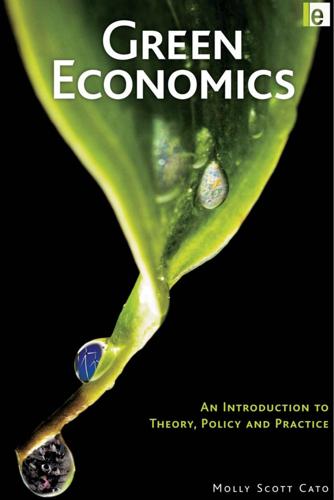
Green Economics: An Introduction to Theory, Policy and Practice
by
Molly Scott Cato
Published 16 Dec 2008
Squires ‘Content islanders reject capitalism for traditional trade’, New Zealand Herald, 12 December 2007. 78 GREEN ECONOMICS volume The Ecology of Money explores the history of money creation and makes clear the instability of the present money system, where commercial banks are permitted to lend money to the public, which then accrues value to the banking system as a whole. Here is Porritt’s description of the way that banks create money, and the advantages this gives them: For instance, about 97 per cent of the UK’s money supply is created by commercial banks more or less out of thin air as interest-bearing (profit-making) loans . . .The banks in the UK make about £20 billion a year in interest from this arrangement. … The money supply created in this way is not linked to real resource use or to the amount of goods and services in the national economy – it is based entirely upon the banks’ commercial judgement about the ability of an individual or an enterprise to pay their loans.

The Great Demographic Reversal: Ageing Societies, Waning Inequality, and an Inflation Revival
by
Charles Goodhart
and
Manoj Pradhan
Published 8 Aug 2020
Canada Cancer Capital Capital account Capital account liberalisation Capital accumulation Capital Adequacy Ratios (CARs) Capital control Capital costs, falling Capital flows, uphill Capital inflows Capitalism, ‘substantially broken’ Capitalist class Capitalist economies, governance problems Capitalist heaven Capital, misallocation of Capital, returns to Capital-labour Capital-labour ratios Capital misallocation Capital per worker in Japanese manufacturing, rising Capital stock Carbon tax Care, eligibility criteria for public funding Care homes Care(rs) Carers, cost of support by ‘Care Supplement’ Care workers Care workers, need for increase in Japan Caribbean Caring expenses, rising Caring services, hard to raise productivity Cash, abolition of Cash flow Cavendish, Camilla, Extra Time The Cavendish Review CBO Report Centenarians, high risk of dementia Central Bank Central Bank Independence (CBI) Central Bank Independence, a ‘paper tiger’ Central Bank Independence, a surety of financial rectitude Central Bank Independence, its glory years Central Bank Independence, populist backlash against Central Bank Independence, under threat Central banks, best friends of Ministers of Finance Central banks, constraints on raising interest rates Central banks, create money Central banks, inflation targets of Central banks, recently best friends of Ministers of Finance Central banks, reverting to normal policies Central bank inflation target Central Bank targets Certificate of Fundamental Care Changing life cycle Cheap labour Chief Executive Officer (CEO) Chief Executive Officer, has information and power Chief officers Child rearing, age of delayed Children Children, age of having Children, staying at home longer Chile China China’s ascent China’s ascent, benefiting AEs China, absence of welfare state China, administration China, ageing population China, ascent in 1990s China, bank deposits of China, big four state-owned banks China, capable of debt cancelation China, continuing strong investment China, corporate debt with lower risk of default China, credit growth unsustainable China, current account balance declining China, current account surplus peak China, debt conversion into equity China, debt is misguided the conventional wisdom China, debt less likely to lead to a crisis China, demographic reversal China, developed coastal regions of China, early stage of development China, educated labour force China, entry of foreign banks China, excess capacity China, financial markets China, focus on raising productivity China, growth decline China, growth decline in 2018/19 China, high personal sector saving China, internal migration, dominated by Eastern Region China, investment ratio China, labour force dynamics changing direction China, land subsidized China, leverage ratio China, low interest rates as a tax on households China, manufacturing sector China, no longer a deflationary force China, one child policy China, past contribution to global growth China population China, property sector China, rapidly ageing population China, remarkable demographic dynamics China, shrinking workforce China, social safety net insufficient China, special economic zones China, surging credit growth China, trade balance with USA China, under-developed interior regions China, unit labour costs China, upgrading technology China, urban savings reduced as interest rates fall China, WTO membership after long negotiations Chinese bonds Chinese elderly care Chinese, more than Americans Chinese seniors Civil Service Climate change Cognitive decline, a common story Cognitive impairment Colombia Commodity price Commodity price shocks Commodity prices, rising Commodity producers Commodity supercycle Communism The Communist Manifesto See alsoEngels, Friedrich; Marx, Karl Communist Party Comparative bargaining power Compertpay, R.
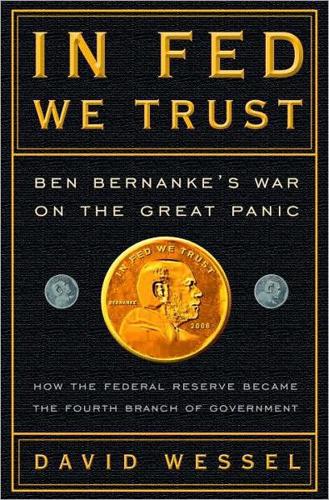
In FED We Trust: Ben Bernanke's War on the Great Panic
by
David Wessel
Published 3 Aug 2009
Its primary tool was still the “federal funds rate,” the interest rate at which banks lend to one another. No consumer ever borrows at the overnight federal funds rate, but any change in that rate normally ripples through the economy by moving other interest rates. To lower rates, the Fed (or any other central bank) creates money from nothing, a process called “printing money,” even though it is electronic, and uses that money to buy U.S. Treasury securities from the portfolios of the banks. The banks then have fewer securities but more money to lend. This increased supply of money lowers the federal funds rate, the price of money.
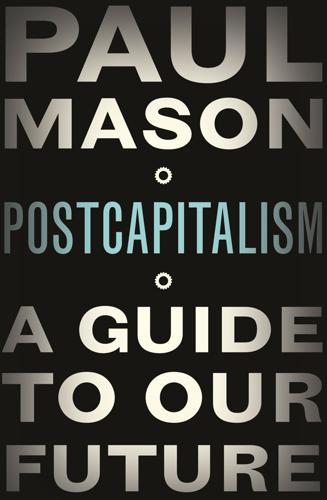
Postcapitalism: A Guide to Our Future
by
Paul Mason
Published 29 Jul 2015
The move away from gold and fixed exchange rates allowed three fundamental reflexes of the neoliberal era to kick in: the expanded creation of money by banks, the assumption that all crises can be resolved, and the idea that profits generated out of speculation can go on rising for ever. These reflexes have become so ingrained in the thinking of millions that, when they no longer worked, it induced paralysis. It is news to some people that banks ‘create’ money, but they always have done: they have always lent out more cash than there was in the safe. In the pre-1971 system, though, there were legal limits to such money creation. In the USA, for savings that could be withdrawn at any time, banks had to hold $20 in cash against every $100 of deposits.

The Future of Money
by
Bernard Lietaer
Published 28 Apr 2013
Instead, me new money game was generating a systemic undertow of competition among all the participants. This is how today's money system pits the participants in the economy against each other. This story isolates the role of interest - the eleventh round - as part of the money creation process, and its impact on the participants. When the bank creates money by providing you with your Pound 100,000 mortgage loan, it creates only the principal when it credits your account. However, it expects you to bring back Pound 200,000 over the next twenty years or so, if you don't, you will lose your house. Your bank does not create the interest; it sends you out into the world to battle against everyone else to bring back the second Pound 100,000.

A Pelican Introduction Economics: A User's Guide
by
Ha-Joon Chang
Published 26 May 2014
Central banks brought interest rates down to historical lows – for example, the Bank of England cut its interest rate to the lowest level since its foundation in 1694. When they could not cut their interest rates any more, they engaged in what is known as quantitative easing (QE) – basically, the central bank creating money out of thin air and releasing it into the economy, mainly by buying government bonds. Soon, however, free-market orthodoxy came back with a vengeance. May 2010 was the turning point. The election of the Conservative-led coalition government in the UK and the imposition of the Eurozone bail-out programme for Greece in that month signalled the comeback of the old balanced budget doctrine.

Prosperity Without Growth: Foundations for the Economy of Tomorrow
by
Tim Jackson
Published 8 Dec 2016
Most money circulating in advanced economies is created by commercial banks, almost literally ‘out of nothing’.31 When a bank agrees to create a loan to a business or a household, it simply enters the amount as a loan on the asset side of its balance sheet and the same amount as a deposit on the liability side of its balance sheet. This deposit is then available to spend on goods and services in the economy. Banks create money by making loans.32 There are a number of important implications of this debt-based money system. One of them is the degree of instability that ensues when things go wrong. Another is that government itself can only finance social investment through commercial (interest-bearing) debt. Another still is that the investment portfolio outlined in this chapter ends up having to compete for credit-worthiness against all sorts of other sometimes unsavoury commercial investments.
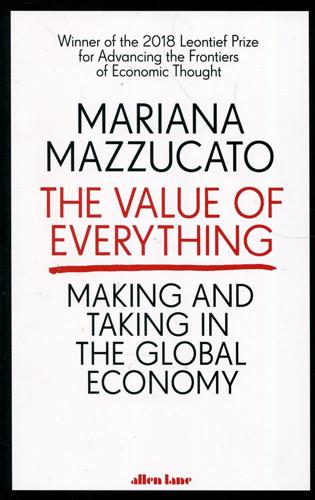
Value of Everything: An Antidote to Chaos The
by
Mariana Mazzucato
Published 25 Apr 2018
Ironically, the disastrous big bank behaviour that triggered the 2008 crash forced regulators (especially in Europe) into further lengthening and complicating an already arduous process for obtaining a new licence, frustrating their plans to unleash a hungry horde of ‘challenger banks'. In issuing licences sparingly, governments and central banks were quietly admitting something they were still reluctant to announce publicly: the extraordinary power of private-sector bank lending to affect the pace of money creation, and therefore economic growth. That banks create money is still a highly contested notion. It was politically unmentionable in 1980s America and Europe, where economic policy was predicated on a ‘monetarism' in which governments precisely controlled the supply of money, whose growth determined inflation. Banks traditionally presented themselves purely as financial intermediaries, usefully channelling household depositors' savings into business borrowers' investment.
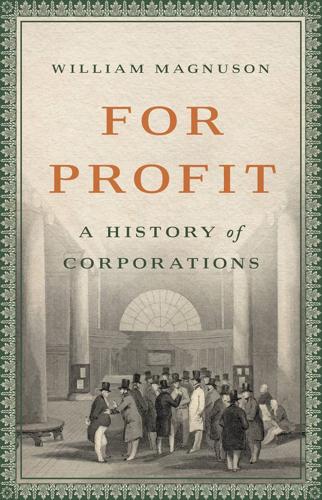
For Profit: A History of Corporations
by
William Magnuson
Published 8 Nov 2022
At the same time, the bank loans out the money to a spender and issues a credit to the spender’s account as well. There are now two deposits, and, importantly, both of these deposits can be used to pay for things. Voilà! The bank has just created money. As the economist John Kenneth Galbraith has described it, “The process by which banks create money is so simple that the mind is repelled. Where something so important is involved, a deeper mystery seems only decent.”2 Banking has two important consequences for the world of capitalism. The first is that banks, wherever and whenever they have existed, exert an unusually strong influence on the surrounding economy.

The Ascent of Money: A Financial History of the World
by
Niall Ferguson
Published 13 Nov 2007
However, the banking sector remained highly fragmented until 1976, when Maine became the first state to legalize interstate banking. It was not until 1993, after the Savings and Loans crisis (see Chapter 5), that the number of national banks fell below 3,600 for the first time in nearly a century. In 1924 John Maynard Keynes famously dismissed the gold standard as a ‘barbarous relic’. But the liberation of bank-created money from a precious metal anchor happened slowly. The gold standard had its advantages, no doubt. Exchange rate stability made for predictable pricing in trade and reduced transaction costs, while the long-run stability of prices acted as an anchor for inflation expectations. Being on gold may also have reduced the costs of borrowing by committing governments to pursue prudent fiscal and monetary policies.

How the Other Half Banks: Exclusion, Exploitation, and the Threat to Democracy
by
Mehrsa Baradaran
Published 5 Oct 2015
Put simply, bank lending is not constrained by deposits or reserves. If that were the case, the economy would have halted in its tracks a century ago. Customer deposits are a major source of bank assets, but the relationship between deposits “in” and loans “out” is not direct. In fact, deposits are created by bank loans. To repeat, commercial banks create money, or bank deposits, by making new loans. For example, when a bank makes a mortgage loan, it does not just give someone $100,000 in cash to go purchase a house. Instead, it creates a credit—a deposit—in the borrower’s bank account for the size of the mortgage. “At that moment, new money is created,” explain Bank of England economists; this is “referred to as ‘fountain pen money,’ created at the stroke of bankers’ pens when they approve loans.”9 It works the same in the United States.
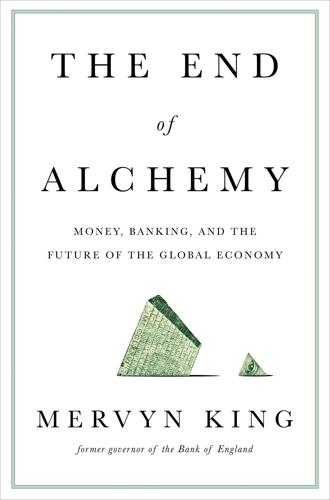
The End of Alchemy: Money, Banking and the Future of the Global Economy
by
Mervyn King
Published 3 Mar 2016
From his vantage point as editor of The Economist, Bagehot observed the 1866 crisis and drew the conclusion that when faced with a sudden and large increase in the demand for liquidity by the public, in other words a bank run – a ‘panic’ – the responsibility of the central bank was to meet it: ‘a panic, in a word, is a species of neuralgia, and according to the rules of science you must not starve it’.40 One of the unique roles of central banks is the ability to create ‘liquidity’.41 Banks create money, but if people lose faith in banks, the ultimate form of money is that created by the central bank – provided it is backed by the tax-raising power of a solvent government. In Germany in October 1923, as the hyperinflation was nearing its peak, the government was close to insolvent with only 1 per cent of its expenditure financed by taxation.

Life Inc.: How the World Became a Corporation and How to Take It Back
by
Douglas Rushkoff
Published 1 Jun 2009
It undermines democracy, as without economic democracy our political democracy can be sold to the highest bidder. It forces people to behave competitively when they don’t want to and would choose not to if they had a real choice. Money is issued through privately owned banks whose fundamental goal is to create profits for their shareholders, not serve the common good of the people. Banks create money as and when they can profit from it, forcing citizens into wage slavery to repay the bank for money it created out of nothing (unbelievable, but true). The expansion and contraction of the money supply locks us into a “boom and bust” cycle of never-ending, unsustainable growth. At some point, a crash is inevitable, and vast amounts of suffering ensue.
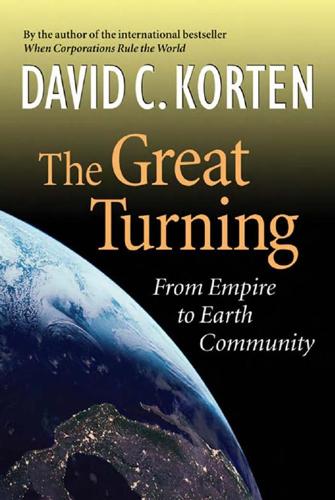
The Great Turning: From Empire to Earth Community
by
David C. Korten
Published 1 Jan 2001
The Ultimate Con Recall the observation in chapter 3 that money is simply an accounting chit created out of nothing, without substance or intrinsic value, which has value only because we believe it does and therefore willingly accept it in exchange for things of real value. In modern financial systems, Modern Empire 139 banks create money when they issue a loan. The bank opens an account in the name of the borrower and enters a number representing the amount of the loan in the account. The bank in essence rents to the borrower money it has created from nothing at whatever interest rate the market will bear. It may also acquire a mortgage on the home, farm, or other real property of the borrower.
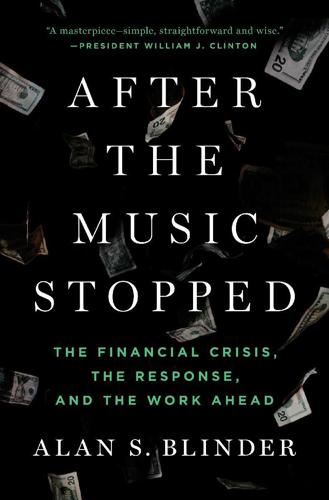
After the Music Stopped: The Financial Crisis, the Response, and the Work Ahead
by
Alan S. Blinder
Published 24 Jan 2013
When I defended Bernanke and the Fed in a Wall Street Journal column, I, too, was attacked by Palin, who argued that “it’s time for us to ‘refudiate’ the notion that this dangerous experiment in printing $600 billion out of thin air, with nothing to back it up, will magically fix economic problems.” It was as if Palin and others had just discovered that central banks create money—and decided they didn’t like it. The furor over QE2 surprised and puzzled Fed policy makers. The policy was less radical than, say, QE1; after all, central banks have been buying (and selling) government bonds forever. It was telegraphed well in advance, so markets barely moved when it was announced.

More: The 10,000-Year Rise of the World Economy
by
Philip Coggan
Published 6 Feb 2020
Collectively, the leaders of the G20 nations agreed at a summit in London to pump $1.1trn into the global economy, by extending the ability of the IMF and World Bank to make loans. In addition, central banks kept cutting rates to stimulate borrowing. By the end of 2008, the Federal Reserve’s main rate was 0.25%; just 15 months previously it had been 5.25%. Quantitative easing (QE) also began that year. This involved central banks creating money and using it to buy government bonds. The aim was twofold. First, it prevented the kind of shrinkage in the money supply that occurred in the 1930s. When the central banks bought bonds, the sellers ended up with more money in their accounts. The second aim was to reduce the long-term bond yield as well as the short-term borrowing rate.

The Quiet Coup: Neoliberalism and the Looting of America
by
Mehrsa Baradaran
Published 7 May 2024
The bank’s depositors hold deposit slips, which are contractual promises by the bank to return their money upon demand (deposits are called demand deposits); the bank’s borrowers hold a mortgage or note legally compelling them to pay the bank a certain amount of interest fees each month. Deposit slips, mortgages, and debt contracts are banknotes that are the equivalent of bank-created money in the economy. A bank charter thus endows banks with the magical power of money creation. Like Schrödinger’s cat, both the new money and old money can exist simultaneously, but only if depositors know their money will be there should they need it. But of course, there is a downside to creating money out of thin air, which is the second crucial feature of banks.
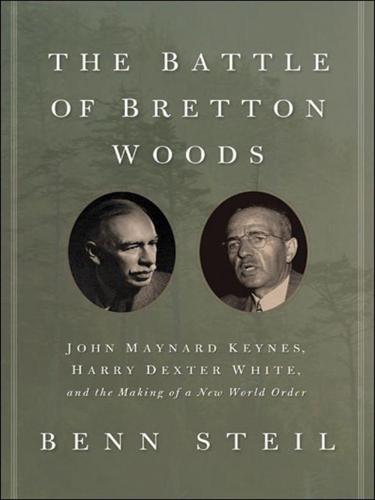
The Battle of Bretton Woods: John Maynard Keynes, Harry Dexter White, and the Making of a New World Order
by
Benn Steil
Published 14 May 2013
That same day, he also sent a letter to Phillips, remarking that White’s “actual technical solution strikes me as quite hopeless. He has not seen how to get round the gold standard difficulties and has forgotten all about the useful concept of bank money.” This was Keynes’s notion that the Clearing Union could create new international money out of thin air, just as a bank creates money by lending out its depositors’ funds. “But,” Keynes then offered, “is there any reason why, when once the advantages of bank money have been pointed out to him, he should not collect and re-arrange his other ideas round this technique?” This was classic Keynes thinking: these Americans are in a lamentable muddle, yet once things are explained to them all will be well.
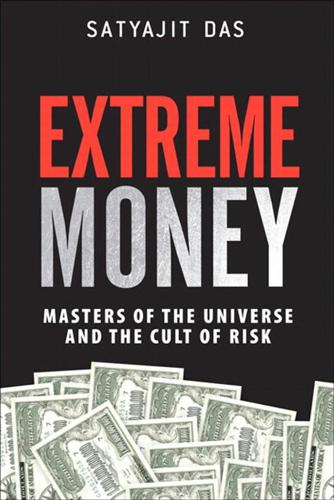
Extreme Money: Masters of the Universe and the Cult of Risk
by
Satyajit Das
Published 14 Oct 2011
The banking system that evolved in the Renaissance survives remarkably unchanged to this day. It is the basis of money machines—a financial perpetual motion device. John Kenneth Galbraith summed it up: The study of money, above all other fields in economics, is one in which complexity is used to disguise truth or to evade truth, not to reveal it. The process by which banks create money is so simple that the mind is repelled.24 Not everybody supported these developments. In 1802, Thomas Jefferson in a letter to Albert Gallatin, secretary of the Treasury, warned: If the American people ever allow private banks to control the issue of their money, first by inflation and then by deflation, the banks and corporations that will grow up around them will deprive the people of their property until their children will wake up homeless on the continent their fathers conquered.25 Debt Clock Paper money represents a claim on itself.
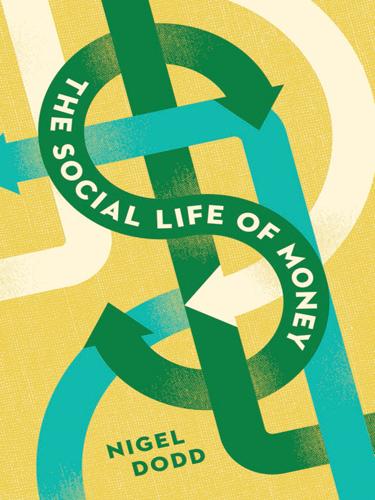
The Social Life of Money
by
Nigel Dodd
Published 14 May 2014
In accordance with its environmentalist language, Douthwaite’s position, too, is based on a certain kind of fear, namely, of the contribution that extant forms of money have been making to the emergence of our “unsustainable, unstable global monoculture” (Douthwaite 2006: 2). On this particular connection, Douthwaite’s argument—in common with the New Economics Foundation in Britain (Ryan-Collins, Greenham et al. 2012)—is that the monetary system as it is currently configured in advanced capitalist countries (with banks creating money as they create loans) supports an economic system that is underpinned by the belief (and corresponding policies) in perpetual growth. Given that interest payments are necessary to service the debts that money consists of, “the economy must grow continuously if it is not to collapse,” and continual growth is unsustainable (Douthwaite 2006: ch. 1).
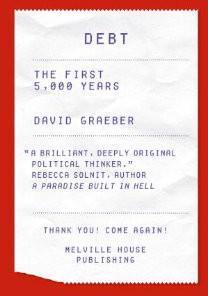
Debt: The First 5,000 Years
by
David Graeber
Published 1 Jan 2010
It is when this stage in the evolution of Money has been reached that Knapp’s Chartalism—the doctrine that money is peculiarly a creation of the State—is fully realized … To-day all civilized money is, beyond the possibility of dispute, chartalist.27 This does not mean that the state necessarily creates money. Money is credit, it can be brought into being by private contractual agreements (loans, for instance). The state merely enforces the agreement and dictates the legal terms. Hence Keynes’ next dramatic assertion: that banks create money, and that there is no intrinsic limit to their ability to do so: since however much they lend, the borrower will have no choice but to put the money back into some bank again, and thus, from the perspective of the banking system as a whole, the total number of debits and credits will always cancel out.28 The implications were radical, but Keynes himself was not.
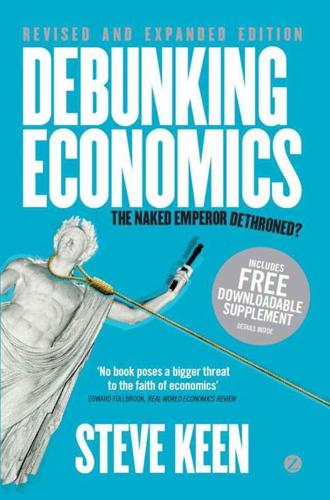
Debunking Economics - Revised, Expanded and Integrated Edition: The Naked Emperor Dethroned?
by
Steve Keen
Published 21 Sep 2011
But I expect Bernanke was underwhelmed by the magnitude of the change: inflation rose from minus 2.1 percent to a peak of 2.7 percent, and it rapidly fell back to a rate of just 1 percent. That is very little inflationary bang for a large amount of bucks. According to the conventional model of money creation – known as the ‘Money Multiplier’ – this large an injection of government money into the reserve accounts of private banks should have resulted in a far larger sum of bank-created money being added to the economy – as much as $10 trillion. This amplification of Bernanke’s $1.3 trillion injection should have rapidly revived the economy – according to neoclassical theory. This is precisely what President Obama, speaking no doubt on the advice of his economists, predicted when he explained the strategy they had advised him to follow, twelve weeks after he took office: 12.10 The volume of base money in Bernanke’s ‘quantitative easing’ in historical perspective And although there are a lot of Americans who understandably think that government money would be better spent going directly to families and businesses instead of banks – ‘where’s our bailout?’
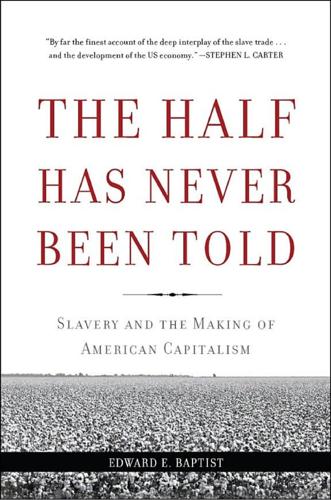
The Half Has Never Been Told: Slavery and the Making of American Capitalism
by
Edward E. Baptist
Published 24 Oct 2016
Paper is useful, of course, because it is light. With it you can transfer large sums in an envelope, whereas even medium-sized amounts of specie are cumbersome (recall Georgia-man John Springs’s ride north to Maryland’s Eastern Shore in 1806, in which the gold in his saddlebags beat up the sides of his horse).32 But more importantly, bank-created money has to be paper (or mere numbers on paper) because only then can money be created out of nothing. And thus only paper money can lead to real economic growth. Imagine an economy that uses only gold and silver, also known as “specie.” A bank in such an economy could lend no more than it received in deposits, and that bank would simply be a glorified mattress.

Capital in the Twenty-First Century
by
Thomas Piketty
Published 10 Mar 2014
The classic theory of Spanish decline blames gold and silver for a certain laxity of governance. 19. Milton Friedman and Anna J. Schwartz, A Monetary History of the United States, 1857–1960 (Princeton: Princeton University Press, 1963). 20. Note that there is no such thing as a “money printing press” in the following sense: when a central bank creates money in order to lend it to the government, the loan is recorded on the books of the central bank. This happens even in the most chaotic of times, as in France in 1944–1948. The money is not simply given as a gift. Again, everything depends on what happens next: if the money creation increases inflation, substantial redistribution of wealth can occur (for instance, the real value of the public debt can be reduced dramatically, to the detriment of private nominal assets).